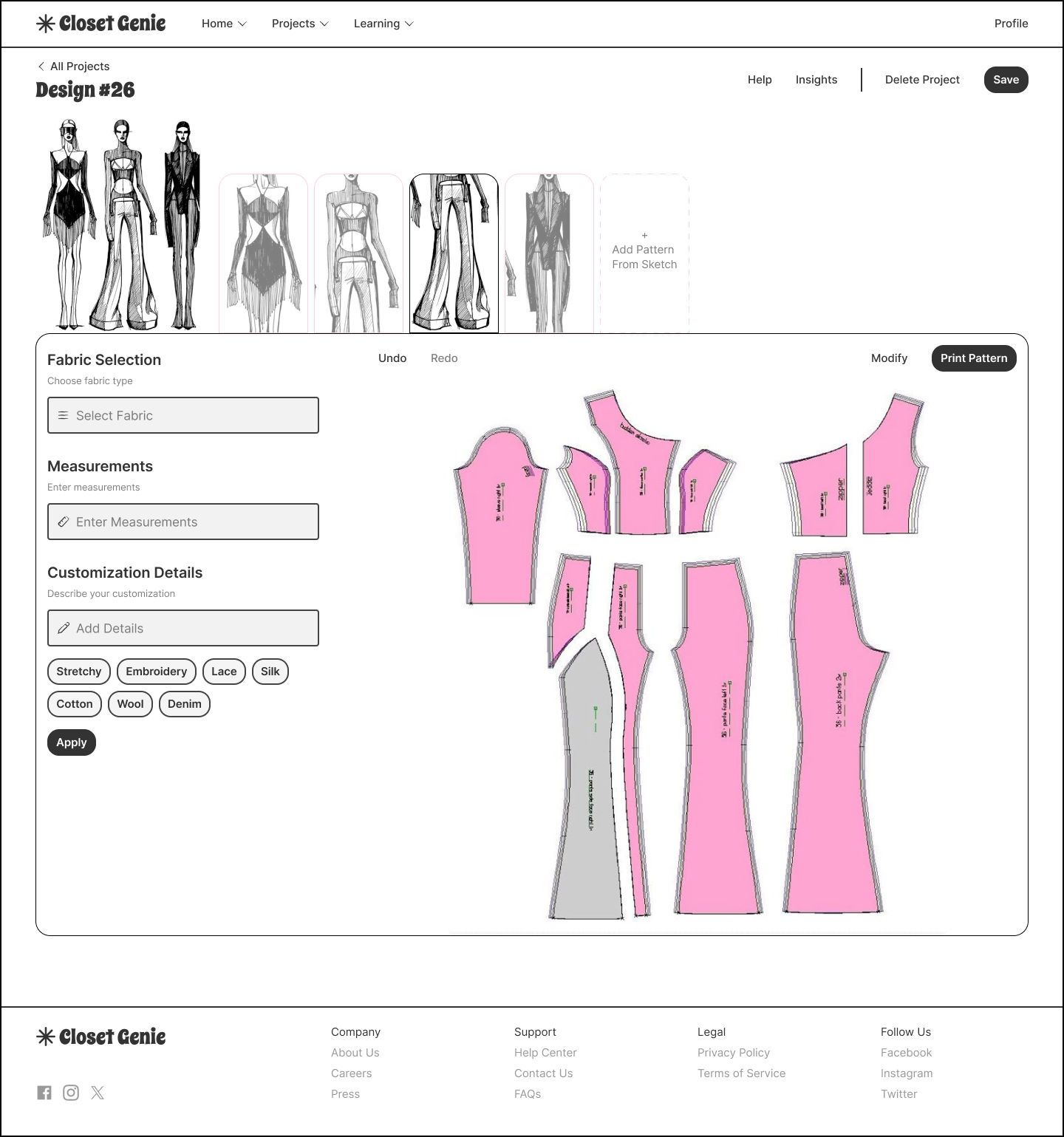Closet Genie AI Assistant
With rising prices and an increasing emphasis on ethical shopping, finding fashionable, high-quality pieces that align with personal style can be challenging. This has led more people to embrace thrifting and upcycling, which are both sustainable and creative solutions. However, these approaches require sewing skills, access to the right materials, and often, clothing patterns—resources not everyone has the time or money to invest in. While fashion enthusiasts may have a clear vision of what they want to create, translating that vision into reality can be daunting due to a lack of technical knowledge, the complexity of working with different fabrics, and the difficulty of finding patterns that match specific measurements. This gap between creative intent and execution presents a major barrier for many aspiring fashion creators.
Assess the user
I propose a Sewing Assistant AI that helps bridge the gap between design vision and execution. The assistant would function as an intelligent guide for upcycling and custom sewing projects. Users could interact with the tool in multiple ways to enhance their experience. First, the AI should be capable of identifying fabrics—whether through a photo or by scanning an existing garment—to suggest appropriate stitching techniques and alteration methods. If users are starting from scratch, they could upload or sketch a design, and the AI would generate a pattern tailored to their exact measurements, ensuring a perfect fit.
To make the interaction seamless and user-friendly, the AI should support both visual and textual inputs. Users could upload sketches, annotate them with specific requests (e.g., “make this section stretchy” or “add embroidery here”), or even use voice commands to describe adjustments. Additionally, integrating a fabric scanner—either through a mobile app feature or an external device—would allow the AI to analyze the material composition and recommend appropriate sewing techniques. The goal is to simplify the design-to-execution process, making fashion customization accessible and enjoyable for all skill levels.
Selecting an AI application/algorithm
To power the Sewing Assistant AI, a combination of machine learning algorithms will ensure seamless fabric identification, pattern generation, and interactive adjustments.
1. Fabric Identification & Pattern Recognition
Convolutional Neural Networks (CNNs): CNNs excel at image recognition, making them ideal for identifying fabric types from images or scans and extracting key elements from fashion sketches.
Alternatives Considered:
Support Vector Machines (SVMs): Good for classification but less effective for detailed image recognition.
K-Nearest Neighbors (KNN): Useful for comparing images but lacks deep-learning capabilities.
2. Sewing Pattern Generation
Generative Adversarial Networks (GANs): GANs generate high-quality sewing patterns based on sketches, body measurements, or reference images, allowing for dynamic customization.
Alternatives Considered:
Decision Trees: Good for structured decision-making but lacks creative generation abilities.
Linear Regression: Not suitable for complex shape generation.
3. Interactive AI-Assisted Design Adjustments
Reinforcement Learning (RL) & Natural Language Processing (NLP): NLP models (like GPT-based AI) process text or voice inputs, while RL refines recommendations over time based on user feedback.
Alternatives Considered:
Naïve Bayes Classifier: Good for categorization but lacks adaptability for interactive problem-solving.
Logistic Regression: Better suited for binary classification than handling evolving user preferences.
Evaluate HCI usability heuristics
Visibility of System Status
The interface provides real-time feedback through loading indicators, progress bars, and confirmation messages, ensuring users are always aware of system status and the outcomes of their actions.
User Control and Freedom
Users can undo or redo changes, exit customization modes easily, and receive confirmation prompts before committing to significant actions, ensuring flexibility and preventing frustration.
Error Prevention
The system minimizes errors by validating inputs (e.g., ensuring measurements are within realistic ranges) and confirming fabric/material recognition before proceeding with pattern generation.
Recognition Rather Than Recall
Menus, tooltips, and on-screen guidance reduce memory load by keeping essential functions and frequently used tools easily accessible, allowing users to focus on their designs.
Flexibility and Efficiency of Use
The interface supports both beginners and experienced users by offering AI-assisted recommendations, manual customization options, and keyboard shortcuts for faster workflow adjustments.
Project
MIT xPRO
Designing and Building AI Products and Services
2025
Select a problem






